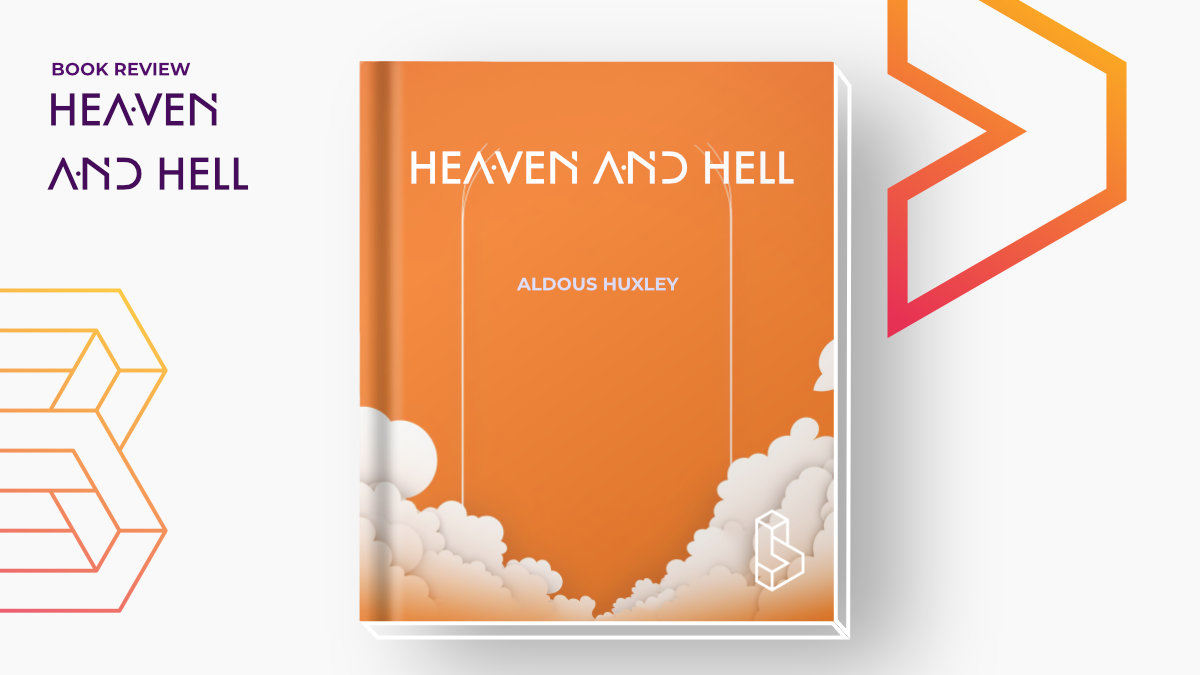Heaven and Hell by Aldous Huxley is a philosophical exploration of our minds. In essence, it asks what is extraordinary; What makes us wonder? It’s part exploration of the psychedelic experience (with mescaline and LSD), part exploration of what those experiences might mean. The book is more esoteric than The Doors of Perception.
Publisher Summary
“Inspired by the poetry of William Blake, Heaven and Hell delves into the murky topic of human consciousness through a discussion of religious mystical perception, biochemistry and psychoactive drug experimentation. Heaven and Hell explains how science, art, religion, literature, and psychoactive drugs can expand the reader’s everyday view of reality, offering a more profound grasp of the human experience. Like his earlier essay, The Doors of Perception, Aldous Huxley’s Heaven and Hell exerted a tremendous influence on the counter-culture movement of the 1960s, inspiring the imaginations of an entire generation of artists and revolutionaries like Jim Morrison and Jackson Pollack.”
Summary Review
“Like the earth of a hundred years ago [1856], our mind still has its darkest Africas, its unmapped Borneos and Amazonian basins.” Huxley remarks that we first need to map/explore our minds, only then form theories, classifications, etc.
He states that he knows of two ways to reach the depth of our minds (or its far-off destination), 1) mescaline (and LSD), 2) hypnosis.
Light is an important concept in the short book. Huxley states that in 2/3rds of our dreams there is no light. Whilst in the psychedelic experience there is almost always much bright light.
Another recurring subject is the absence of language. In many contemporary theories, language (or the absence of it) is often mentioned.
The third thing experienced is ‘objects’, by this he means geometrical forms, patterns, mosaics. An example of how this looks can be found on PsychonautWiki.
“Every mescalin experience, every vision arising under hypnosis, is unique; but all recognizably belong to the same species,” Huxley states that we don’t know why, researchers now are trying to identify what changes in the brain (and what underlies the experiences, but still makes them unique for every person – for instance, see this paper).
The theme of light is continued with an observation that many people see – brightly colored – gems. But, nowadays many people see pastel colors, so have we become too familiar with bright colors (e.g. through advertisements)? “Familiarity breeds indifference. We have seen too much pure, bright colors at Woolworth’s to find it intrinsically transporting.” This is an interesting observation, but in the PsychonautWiki link, there is (still) an overwhelming amount of bright colors in the visuals.
Huxley then observes that the beings some people see “… are content merely to exist,” which reflects nicely on his observations in The Doors of Perception that he felt the same (and thus also not motivated to do much).
In art (paintings), Huxley observes that we like some types more than others, “… natural objects a very long way off, and, second those which represent them at close range.” You could argue that these are also the domains that are extraordinary, that these are ones we don’t deal with normally (the average range), so observing them is ‘special’.
“But visionary experience is not always blissful. It is sometimes terrible. There is hell as well as heaven.” Seeing the world this way, Huxley argues, can be seen in the later Van Gogh landscapes and Kafka’s stories (e.g. The Metamorphosis).
Huxley again makes the link between negative psychedelic experience and schizophrenics. He makes a good point about schizophrenics not being able to ‘exit’ the experience, whilst most people on psychedelics do know quite well that in a few hours they will be back to ‘normal’.
He also argues that “If the liver is diseased,” then this may cause the negative psychedelic experience. There seems to be little to no proof of this hypothesis.
Huxley ends the book with the following: “My own guess is that modern spiritualism and ancient tradition are both correct. There is a posthumous state of the kind described in Sir Oliver Lodge’s book Raymond; but there is also a heaven of blissful visionary experience; there is also a hell of the same kind of appalling visionary experience as is suffered here by schizophrenics and some of those who take mescalin; and there is also an experience, beyond time, of union with the divine Ground.”
Key references/mentions
There is much reference to works of art (paintings, poems). Again he mentions the following book:
- The Tibetan Book of the Dead – by/translated Graham Coleman
Referenced by
Heaven and Hell has been used as a reference book in the 1960s counter culture. After that, it has found less fame than The Doors of Perception (review).
About the author
(from the back of the book) “Poet, playwright, novelist, short story writer, travel writer, essayist, critic, philosopher, mystic, and social prophet, Aldous Huxley was one of the most accomplished and influential English literary figures of the mid-twentieth century.”
His best-known work is the dystopian novel Brave New World.
His other work on the psychedelic experience is The Doors of Perception (review).

